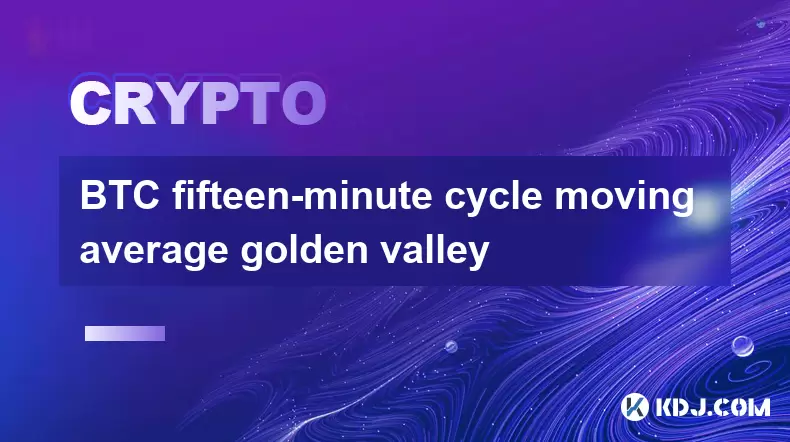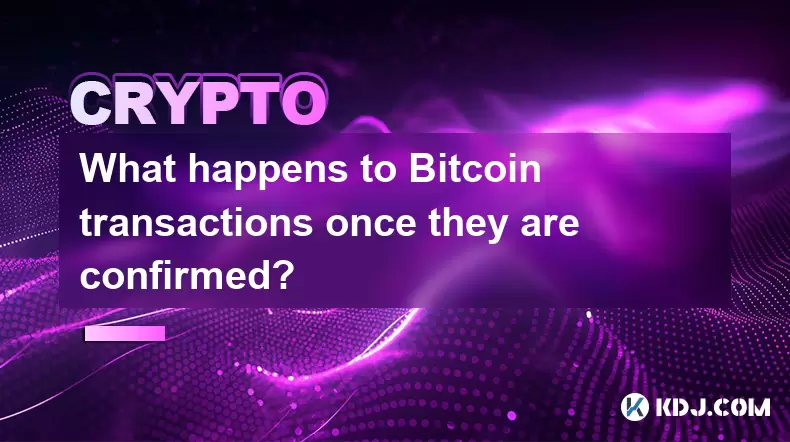-
 Bitcoin
Bitcoin $116900
0.00% -
 Ethereum
Ethereum $4280
5.48% -
 XRP
XRP $3.265
-1.45% -
 Tether USDt
Tether USDt $1.000
-0.01% -
 BNB
BNB $807.0
1.41% -
 Solana
Solana $183.1
2.93% -
 USDC
USDC $0.9999
0.00% -
 Dogecoin
Dogecoin $0.2440
6.50% -
 TRON
TRON $0.3357
-0.88% -
 Cardano
Cardano $0.8178
2.63% -
 Hyperliquid
Hyperliquid $44.13
7.45% -
 Chainlink
Chainlink $21.39
9.09% -
 Stellar
Stellar $0.4524
-0.84% -
 Sui
Sui $3.957
2.13% -
 Bitcoin Cash
Bitcoin Cash $572.7
-2.54% -
 Hedera
Hedera $0.2671
1.54% -
 Avalanche
Avalanche $24.77
4.17% -
 Ethena USDe
Ethena USDe $1.001
0.02% -
 Litecoin
Litecoin $122.3
-1.94% -
 Toncoin
Toncoin $3.432
2.26% -
 UNUS SED LEO
UNUS SED LEO $9.007
0.49% -
 Shiba Inu
Shiba Inu $0.00001396
5.26% -
 Uniswap
Uniswap $11.09
1.64% -
 Polkadot
Polkadot $4.155
4.57% -
 Dai
Dai $1.000
0.00% -
 Pepe
Pepe $0.00001253
5.11% -
 Cronos
Cronos $0.1588
2.67% -
 Bitget Token
Bitget Token $4.512
0.05% -
 Monero
Monero $275.0
0.64% -
 Ethena
Ethena $0.7527
15.10%
BTC fifteen-minute cycle moving average golden valley
The BTC fifteen-minute cycle moving average golden valley strategy uses short and long-term MAs on a 15-min chart to spot potential Bitcoin buying opportunities.
Jun 04, 2025 at 01:42 pm

The concept of the BTC fifteen-minute cycle moving average golden valley is a technical analysis strategy used by traders to identify potential buying opportunities in the Bitcoin market. This strategy revolves around the interaction of short-term and longer-term moving averages on a fifteen-minute chart, aiming to pinpoint moments when the market might be poised for an upward movement. Understanding this strategy requires a deep dive into moving averages, the fifteen-minute cycle, and the significance of the golden valley.
Understanding Moving Averages
Moving averages are fundamental tools in technical analysis, used to smooth out price action and identify trends over a specified period. In the context of the fifteen-minute cycle moving average strategy, traders typically use two moving averages: a shorter-term moving average (e.g., a 5-period moving average) and a longer-term moving average (e.g., a 20-period moving average). These averages are calculated on the fifteen-minute chart, providing a more granular view of price movements compared to daily or hourly charts.
The shorter-term moving average reacts more quickly to recent price changes, while the longer-term moving average provides a broader perspective on the trend. When the shorter-term moving average crosses above the longer-term moving average, it is often interpreted as a bullish signal, suggesting that the momentum is shifting in favor of the bulls.
The Fifteen-Minute Cycle
The fifteen-minute cycle refers to the timeframe on which the moving averages are plotted. This cycle is chosen because it offers a balance between being short enough to capture rapid price movements and long enough to filter out some of the noise that can be present in shorter timeframes like five-minute or one-minute charts. Traders who use the fifteen-minute cycle can make more informed decisions based on recent price action without being overwhelmed by minute-by-minute fluctuations.
The Golden Valley Concept
The golden valley is a term used to describe a specific setup where the price of Bitcoin dips into a valley between two peaks, and the moving averages align in a way that suggests a potential reversal. This setup is considered "golden" because it is seen as a high-probability entry point for traders looking to capitalize on an upcoming bullish move.
To identify a golden valley, traders look for the following conditions on the fifteen-minute chart:
- Price action forms a valley: The price of Bitcoin dips to form a valley between two higher peaks.
- Moving averages converge: The shorter-term moving average crosses above the longer-term moving average within the valley.
- Volume confirmation: There is an increase in trading volume as the price approaches the valley, suggesting strong interest at these levels.
Identifying the Golden Valley on the Fifteen-Minute Chart
To effectively identify a golden valley on the fifteen-minute chart, traders follow these steps:
- Open a fifteen-minute chart of Bitcoin: Use a trading platform that allows you to view Bitcoin price action on a fifteen-minute timeframe.
- Plot the moving averages: Add a 5-period and a 20-period moving average to the chart. These settings can be adjusted based on personal preference and market conditions.
- Monitor price action: Watch for the price to form a valley between two higher peaks. This can be done by drawing trend lines or using technical analysis tools to highlight the peaks and valleys.
- Look for the moving average crossover: Pay close attention to the point where the 5-period moving average crosses above the 20-period moving average within the valley. This crossover is the key signal for a potential golden valley setup.
- Check volume: Confirm the setup by observing an increase in trading volume as the price approaches the valley. Higher volume can indicate stronger interest and potential for a reversal.
Trading the Golden Valley
Once a golden valley setup is identified, traders can consider entering a long position. Here are some steps to take when trading the golden valley:
- Set entry point: Enter a long position when the 5-period moving average crosses above the 20-period moving average within the valley. This crossover is the trigger to initiate the trade.
- Set stop-loss: Place a stop-loss order below the valley's low to manage risk. This ensures that if the price continues to fall, the trader's losses are limited.
- Set take-profit: Determine a take-profit level based on the height of the previous peak or by using a risk-reward ratio. For example, if the risk (distance from entry to stop-loss) is 1%, the take-profit might be set at a level that offers a 2% or 3% reward.
- Monitor the trade: Keep an eye on the trade as it progresses. If the price moves in favor of the trade, consider adjusting the stop-loss to lock in profits.
Risk Management and Considerations
While the golden valley strategy can be effective, it is not without risks. Traders should always practice sound risk management and consider the following:
- Market volatility: Bitcoin is known for its volatility, which can lead to false signals and rapid price movements that can trigger stop-losses.
- False breakouts: Sometimes, the price may briefly break above the moving averages only to reverse quickly. This can result in a losing trade if not managed properly.
- Over-reliance on technicals: While technical analysis is powerful, it should be used in conjunction with other forms of analysis, such as fundamental analysis and market sentiment, to make more informed trading decisions.
Backtesting and Optimization
To improve the effectiveness of the golden valley strategy, traders can backtest it on historical data. This involves applying the strategy to past price action to see how it would have performed. Here are some steps for backtesting:
- Collect historical data: Obtain fifteen-minute price data for Bitcoin over a significant period.
- Apply the strategy: Use trading software or a spreadsheet to apply the golden valley strategy to the historical data, noting entry and exit points.
- Analyze results: Calculate the profitability of the strategy, including win rate, average win, average loss, and risk-reward ratio.
- Optimize parameters: Adjust the moving average periods or other parameters to see if performance can be improved. For example, a trader might test a 10-period and 30-period moving average combination to see if it yields better results.
Frequently Asked Questions
Q: Can the golden valley strategy be applied to other cryptocurrencies?
A: Yes, the golden valley strategy can be applied to other cryptocurrencies, but traders should be aware that different assets may have different levels of volatility and liquidity. It's important to adjust the moving average periods and risk management strategies accordingly.
Q: How often do golden valley setups occur in the Bitcoin market?
A: The frequency of golden valley setups can vary depending on market conditions. In highly volatile periods, setups may occur more frequently, while in more stable periods, they might be rarer. Traders should remain vigilant and monitor the market continuously.
Q: Is the golden valley strategy suitable for beginners?
A: The golden valley strategy can be suitable for beginners, but it requires a solid understanding of moving averages and technical analysis. Beginners should start with a demo account or small position sizes to gain experience before trading with larger sums.
Q: What other indicators can be used in conjunction with the golden valley strategy?
A: Traders can enhance the golden valley strategy by using additional indicators such as the Relative Strength Index (RSI) for overbought/oversold conditions, the MACD for trend confirmation, or volume indicators to confirm the strength of the setup. Combining multiple indicators can provide a more robust trading signal.
Disclaimer:info@kdj.com
The information provided is not trading advice. kdj.com does not assume any responsibility for any investments made based on the information provided in this article. Cryptocurrencies are highly volatile and it is highly recommended that you invest with caution after thorough research!
If you believe that the content used on this website infringes your copyright, please contact us immediately (info@kdj.com) and we will delete it promptly.
- Penny Crypto Dreams: Can XRP Reach $10,000? A Look at LILPEPE and the Meme Coin Mania
- 2025-08-10 04:50:11
- World Liberty Financial's $1.5B Fundraise: What's the Deal with the WLFI Token?
- 2025-08-10 04:30:12
- Ozak AI, Tokens, and Investment: What's the Buzz?
- 2025-08-10 04:35:15
- Pepe Coin Price Prediction: Will the Memecoin Frog Leap to 100x Gains?
- 2025-08-10 04:50:11
- Solana Meme Coin Presales: Hype or the Next Big Thing?
- 2025-08-10 02:50:12
- Pi Network, Altcoin Season, and Breakout Tokens: What's Hot in 2025?
- 2025-08-10 02:50:12
Related knowledge

What are the key features of Bitcoin?
Aug 10,2025 at 02:50am
Decentralization and Peer-to-Peer NetworkOne of the most defining characteristics of Bitcoin is its decentralized nature. Unlike traditional financial...

Can the Bitcoin protocol be changed?
Aug 07,2025 at 01:16pm
Understanding the Bitcoin ProtocolThe Bitcoin protocol is the foundational set of rules that govern how the Bitcoin network operates. It defines every...

What happens to Bitcoin transactions once they are confirmed?
Aug 09,2025 at 05:22am
Understanding Bitcoin Transaction ConfirmationWhen a Bitcoin transaction is initiated, it is broadcast to the network and placed in a pool of unconfir...

How are Bitcoin transactions verified?
Aug 08,2025 at 06:57am
Understanding Bitcoin Transaction VerificationBitcoin transactions are verified through a decentralized network of nodes and miners that ensure the le...

How does decentralization make Bitcoin secure?
Aug 08,2025 at 09:35am
Understanding Decentralization in BitcoinDecentralization is a foundational principle of Bitcoin's architecture and plays a critical role in its secur...

What are some common misconceptions about Bitcoin?
Aug 07,2025 at 07:22pm
Bitcoin is Just Like Regular MoneyA widespread misconception is that Bitcoin functions identically to traditional fiat currencies like the US dollar o...

What are the key features of Bitcoin?
Aug 10,2025 at 02:50am
Decentralization and Peer-to-Peer NetworkOne of the most defining characteristics of Bitcoin is its decentralized nature. Unlike traditional financial...

Can the Bitcoin protocol be changed?
Aug 07,2025 at 01:16pm
Understanding the Bitcoin ProtocolThe Bitcoin protocol is the foundational set of rules that govern how the Bitcoin network operates. It defines every...

What happens to Bitcoin transactions once they are confirmed?
Aug 09,2025 at 05:22am
Understanding Bitcoin Transaction ConfirmationWhen a Bitcoin transaction is initiated, it is broadcast to the network and placed in a pool of unconfir...

How are Bitcoin transactions verified?
Aug 08,2025 at 06:57am
Understanding Bitcoin Transaction VerificationBitcoin transactions are verified through a decentralized network of nodes and miners that ensure the le...

How does decentralization make Bitcoin secure?
Aug 08,2025 at 09:35am
Understanding Decentralization in BitcoinDecentralization is a foundational principle of Bitcoin's architecture and plays a critical role in its secur...

What are some common misconceptions about Bitcoin?
Aug 07,2025 at 07:22pm
Bitcoin is Just Like Regular MoneyA widespread misconception is that Bitcoin functions identically to traditional fiat currencies like the US dollar o...
See all articles

























































































